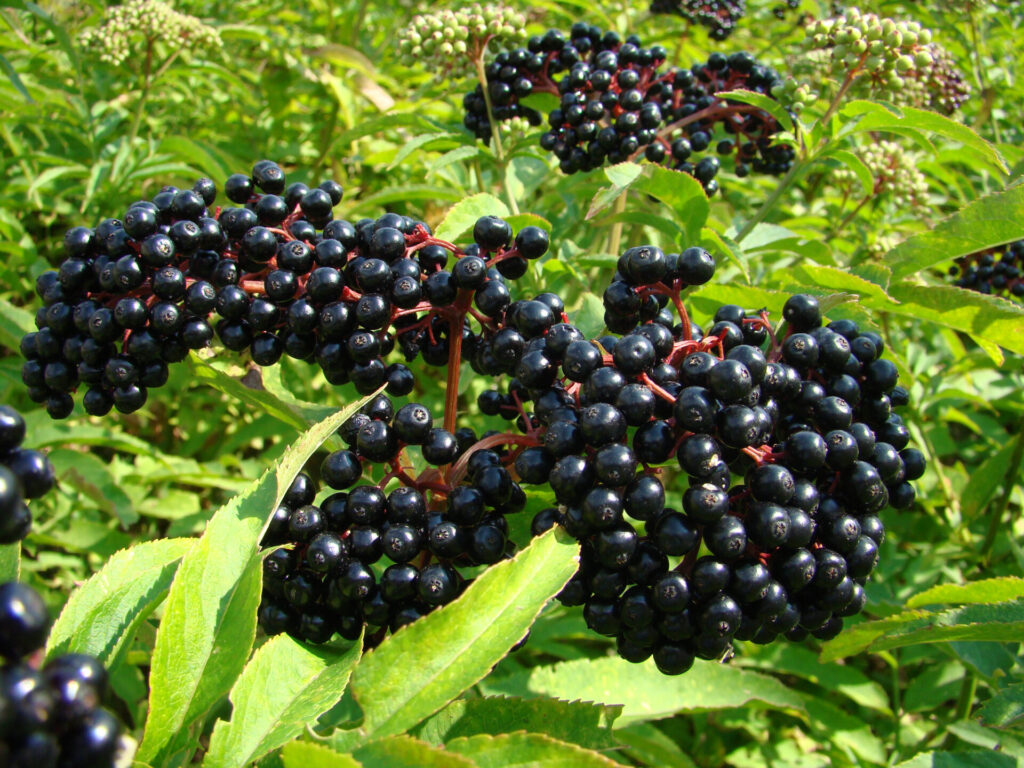Elderberries have long been known as very beneficial plants to have growing in your
garden. They are an excellent permaculture forest garden plant. The flowers, berries, leaves, stems, and
branches all have uses in the home, kitchen, apothecary, or garden.
There are two main varieties of elderberry that are best for growing:
Black elderberry (Sambucus nigra), which is native to Europe, but has naturalized in much of Asia and
North America. Another very similar species of black elderberry is the American Elderberry (Sambucus
canadensis), which is native to eastern North America.
Blue Elderberry (Sambucus nigra ssp. cerulea), which is native to western North America.






